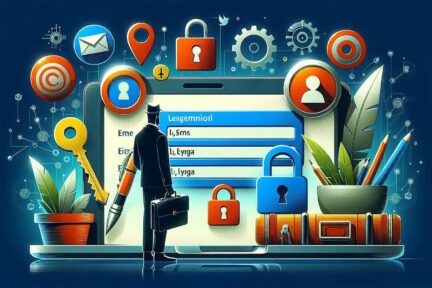Many people worry about someone hacking their computers, but they’re not thinking about their wireless network being breached. Wireless printers are a tool that most individuals use sporadically—for example, when they want to print theatre tickets or Amazon returns labels!
Printers tend to be out of sight, out of mind. That is, until you need to print something and run out of ink. Well, they’re not out of the minds of hackers. Unsecured printers are a classic way for criminals to access a wireless network. And your home network could also be your business network if you work from home.
To illustrate this point, Cybernews purposely hacked printers. It hijacked nearly 28,000 unsecured printers globally, with a success rate of 56%. Once it gained access, it made the printers print out a guide on printer security.
How exposed is your wireless network from your printer? We’ve got some security tips below to help. These tips can help you secure your wireless network better and keep data on all devices more secure.
When you buy a new printer, it will likely include default information. Manufacturers give you a way to connect and set up your device, usually involving default login information.
Immediately change that information during set up. Hackers use a master list of all these defaults. They plug it into an automated script and keep trying until they get a hit. Change these, and make sure you create a strong password. Also, make sure you password-protect the printer and network for secure network printing.
Keeping firmware updated is vital to keeping your wireless network secure. Hardware needs updating just like computers, software, and apps do. Those updates often contain critical security patches.
Firmware updates aren’t usually as visible as software updates. Software and OS updates typically give you a popup notification. But updates to the printer drivers and firmware aren’t so visible.
Some of the places you can check for firmware updates are:
A network firewall is important for monitoring traffic across your wireless network. Firewalls can block suspicious activity to keep hackers out of your network. You should configure the firewall to watch incoming and outgoing printer traffic.
Most of today’s home routers allow you to set up a guest network. This is a separate Wi-Fi that runs from the same router you use for your main network. It’s harder for hackers to get from one network to another.
Keeping a less secure device separated from computers and phones improves security. You can still print to your printer from devices on another network. It would be best if you had things configured correctly. If you need help with that, just let us know.
IoT devices, like printers, often have many ways to connect. You may only need some of the ports or services that come with your printer. These ports are risk areas where hackers could find a way in.
Disabling any ports and sharing features you don’t need is best. This reduces the risk of a breach.
Most home printers aren’t used as much as work printers. People may only use them once a month or a few times a year. If you’re not using your printer constantly, unplug it when not in use.
Unplugging the device is a surefire way to cut off hackers’ access. When it’s shut down, no access is available.
Your printer is one device on your network. Most families connect several devices to their home Wi-Fi. In 2022, the average number of connected devices per U.S. household was 22.
Families need to know and adopt good cyber habits. This keeps everyone’s data more secure. It also helps you avoid costly identity theft breaches. Or the takeover of things like baby monitors.
Some standard best practices to follow for good cyber hygiene are:
You need the best IT support in London. Technology is complicated and expensive. It’s so hard to maintain everything and know what to do when something breaks or goes wrong. IT problems can put a damper on your day. They’re frustrating, time-consuming, and seem like a never-ending cycle of issues.
Penntech’s average NPS score over 90 days is 84. The average Net Promoter Score (NPS) for IT Managed Service Providers (MSPs) can vary. Still, an NPS of around 50 is considered excellent in this industry, with scores above 70 exceptional and rare.
We offer our services on a trial basis for the first three months because we’re confident in our delivery and approach.
Penntech offers a wide range of IT services, from strategic project management to 24/7 remote support, ensuring all your IT needs are always covered.
We provide advanced cybersecurity measures and expertise, including penetration testing services and Cyber Essentials, to protect clients from cyber threats.
We offer Clients the ability to scale IT services up or down based on their needs. This flexibility is crucial for businesses that experience seasonal changes or rapid growth.
Other providers often enforce their preferred IT stack, but we don’t, as IT is not a one-size-fits-all solution.
We ensure our Clients’ business continuity through robust disaster recovery and backup solutions.
With experience in various verticals and industries, Penntech understands different businesses’ unique IT challenges and can provide customised solutions..
Contact us today or explore the range of support packages on offer.


Business owners often have to wear many hats, from handling HR and marketing tasks to managing the finances. One task…

Cool Windows 11 Features That May Make You Love This OS
Microsoft released the Windows 11 operating system (OS) over a year ago. It was well-received mainly with reviews as stable…

6 Ways to Prevent Misconfiguration (the Main Cause of Cloud Breaches)
Misconfiguration of cloud solutions is often overlooked when companies plan cybersecurity strategies. Cloud apps are typically quick and easy to…

4 Proven Ways to Mitigate the Costs of a Data Breach
No business wants to suffer a data breach, but unfortunately, it’s difficult to avoid them in today’s environment. Approximately 83%…

The benefits of AI include advancing our technology, improving business operations, and much more. Adoption of AI has more than doubled…

Leading Password Managers for Personal and Business
We hope that your business is already considering a password manager system, but there’s still the matter of finding the…

What’s Changing in the Cybersecurity Insurance Market?
Cybersecurity insurance is still a pretty new concept for many SMBs. It was initially introduced in the 1990s to provide coverage for large enterprises. It covered things like data processing errors and online media.

What are the advantages of implementing Conditional Access?
It seems that nearly as long as passwords have been around, they’ve been a major source of security concern. Eighty-one…

Cybersecurity Review 2023: Top Threats and Trends
As we delve into 2023, the cybersecurity landscape has never been more dynamic and crucial to our digital lives. From…

Essential Cybersecurity Tips to Safeguard Your Digital
In today’s hyper-connected world, protecting your digital life is more crucial than ever. With cyber threats lurking around every corner,…

Cybersecurity Guidelines: Must-Know Tips!
In an increasingly digital world, protecting your online presence is more critical than ever. Cybersecurity breaches are no longer just…

Cybersecurity Steps to Secure Your Data
In today’s digital age, protecting your data is more critical than ever. Cyber threats are constantly evolving, and it’s crucial…

Cybersecurity: Navigating Emerging Threats and Opportunities
In today’s digital age, cybersecurity has become a critical concern for businesses and individuals alike. As technology continues to evolve,…

How Service Cloud Transforms Customer Experience
In today’s competitive business landscape, delivering exceptional customer experiences is paramount. Service Cloud, a powerful customer service platform, has revolutionised…

A Comprehensive Guide to Cybersecurity Audits for Businesses
In today’s digital age, cybersecurity is of utmost importance for businesses. Cybersecurity audits play a crucial role in protecting sensitive…

IT Service Management for Modern Businesses
In today’s digital age, IT Service Management (ITSM) has become a cornerstone for modern businesses. As companies increasingly rely on…

Essential Skills Every Cybersecurity Engineer Must Master
In the ever-evolving field of cybersecurity, engineers must arm themselves with a diverse array of skills to defend against the…